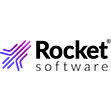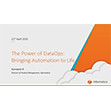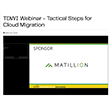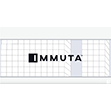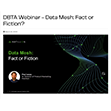
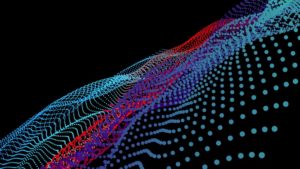
(CodexSerafinius/Shutterstock)
Since the data fabric concept debuted a few years ago, it has become a popular method for enterprises to integrate disparate data management tools. Fabrics are yielding dividends for users, but nothing stays still in big data for long, which is why Forrester is discussing what’s new in data fabric 2.0.
As data volumes expanded and the problems of disconnected data silos became more became acute, data fabrics emerged as the connective tissue to help enterprises cope. By linking together the various data management tools that enterprises use to ingest, cleanse, transform, secure, and govern the data at the metadata layer, data fabrics can alleviate big data management pain and help get on with their advanced analytics, data science, and AI projects.
Data fabric 2.0 is marked by several enhancements over first-generation fabrics, most notably with the expansion of data intelligence across the stack, says Forrester Vice President and Principal Analyst Noel Yuhanna, who co-authored a recent Forrester report titled “Data Fabric 2.0 for Connected Intelligence.”
“What we see in 2.0 is more intelligence coming into the platform itself,” Yuhanna says. “1.0 was just getting all the data management functions together, so we can accelerate those use cases…. And 2.0 takes it to the next level, which is more about the intelligence coming into the platform.”
With data fabric 2.0, the various products that make up the fabric will be capable of recognizing different types of data, Yuhanna says. For example, it will be able to identify credit card data coming into the fabric via one channel, he says, and know which other data is relevant.
“It probably knows that, hey, I need to connect this data which I loaded yesterday, with data which I loaded two weeks ago,” he says. “The intelligence is coming into play, which I think is very important. This is going to be a very important direction in the next five to 10 years for the journey of data fabric. The intelligence will be the most important element of data fabrics going forward.”
Much of the intelligence will be driven by having metadata shared across the various products that make up the fabric, Yuhanna says. Master data management (MDM) tools will also become more prominent in data fabrics, and will help ensure that enterprise are using the best data for a given task. In some cases, MDM projects will live next to data fabrics, while in others, the data fabric itself will function as the MDM, he says.
Graph engines will also become more common in data fabric deployments in the future. Graph databases, also known as knowledge graphs, will help to drive intelligence with data fabric 2.0, Yuhanna says.
“Graph engine is all about having graph capabilities to connect the dots together,” he says. “When you integrate two or four sources of data, it’s not a big deal. You can manually do some of this. Think about hundreds of sources of data coming in, or thousands of sources. It becomes humanly impossible to integrate them. That’s why you need an engine, like a graph engine, to really start to do the integration work.”
Not all data fabric vendors currently offer graph engines, but Yuhanna says that more vendors will be adding them to help connect the dots in the future. “I think this is going to be a huge requirement going forward for all of the vendors to increate graph engine,” he says. “As people mature their systems and platforms with data fabric, this becomes a critical requirement.”
Data fabric 2.0 is also marked by more real-time connectivity. Since the pandemic began, consumers have been putting pressure on companies to deliver better and faster service online. When those business requirements get translated to the IT departments, it means more adoption of streaming data systems, such as Apache Kafka and Amazon Kinesis.
For large enterprises, just shipping data through faster pipes is one thing, but ensuring that the freshest data is available for the myriad of connected data services is something else. That’s where data fabric 2.0 comes in.
“The fact is, [data] pipelining is becoming more integrated,” Yuhanna says. “So it means you can get…these data sources coming in quickly to the fabric.”
One big retailer that has adopted streaming data in their data fabric is able to assemble all the information about customers within 10 seconds of that customer calling into the main hotline, Yuhanna says.
“By the time the custom gets connected, they already know exactly where this customer is calling in from, what are his likes and dislikes, and what are the potential opportunities for us,” he says. “This is happening real time in the fabric.”
Data fabric 2.0 will also make more room for data security and regulatory compliance concerns. Data security and data governance have always been first-class members of the data fabric, but emerging concerns amid tighter industry regulations around data storage and processing is pushing the concern higher up the stack.
Yuhanna recalls how one Forrester client found a novel use for a data fabric in this arena. The bank had thousands of users, and during an audit, it discovered that some former employees still retained their access to certain underlying systems. 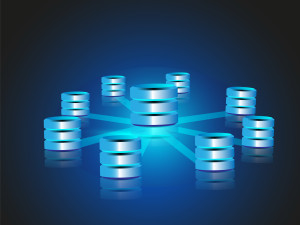
“They said, hey we can use a fabric that’s more centralized for security, authentication, authorization, and access control, as opposed to having it in the underlying systems,” the analyst says. “They implement that in four to six months and they got very good success. The auditors love that approach because it was more centralized. They knew exactly who was getting what access to data within the organization. And all the processes also have to connect through his fabric route. It become like LDAP, so to speak, for data access.”
Data fabric is about centralizing technologies and processes involved in the management of data. With data fabric 1.0, that mostly involved internal data, such as data from ERP and CRM systems. But it should come as no surprise that with data fabric 2.0, external data and data living on the edge will be brought more into the central data fold.
Forrester clients are looking to data fabrics to help integrate an array of external data, including social data, credit card data, government data, and data from open data initiatives, Yuhanna says.
“We’re starting to see the fabric expanding outside of the organization,” he says. “It’s become a more global trend. I think the global fabric play a big role because at the end of the day, you can connect multiple of these environments together, internally but also generally as well.”
The edge figures to play a central role in data fabric 2.0, too. While Yuhanna is tracking the emergence of cloud-based data fabric as a service (DFaaS) offerings that provide centralized access to data management for customers’ data living in a single cloud, there will also be a place for data fabrics that extend out beyond a single cloud.
“That’s why the fabric actually becomes a very strong value proposition, to connect the dots between the on-premise world, the cloud world, the multi-cloud world, and the edge,” Yuanna says
What’s more, data fabrics are also starting to cover smart devices and connected cars. “They also need consistent data, they need trusted data, they also need real time data for business,” Yuhanna says. “So we’re seeing that fabric is moving to the edge for those use cases, as well. But this is very early for the fabric in that lane.”
You can read Forrester’s new report “Data Fabric 2.0 For Connected Intelligence” at this link.
Related Items:
Data Mesh Vs. Data Fabric: Understanding the Differences
Data Fabric Brings Data Together for Timely Decisions
These 15 Data Fabrics Made the Cut in Forrester’s Wave
September 15, 2025
- Penn State Center for Social Data Analytics Now Accepting Grant Applications
- Pacific Wave, Cal Poly Humboldt, and Internet2 Collaborate on Connectivity to Singapore, Guam, and Jakarta
- Governing AI Starts with Giving Users Control Over Their Data
- KX and OneTick Merge to Unite Capital Markets Data, Analytics, AI and Surveillance on One Platform
- Snowflake Ranked by Fortune as #1 on Its Future 50 2025 List
- Exabeam and Cribl Partner to Power Scalable, High-Fidelity Threat Detection with Next-Gen Data Pipelines
September 11, 2025
- MinIO Brings Hyperscaler Economics On-Prem with AIStor Pods
- Honeycomb Introduces the Developer Interface of the Future with AI-Native Observability Suite
- AdaParse: Smart PDF Processing for Scientific AI Training
September 10, 2025
- Progress Software Launches SaaS RAG Platform for Verifiable Generative AI
- Sigma Reveals New AI, BI, and Analytics Features, Redefining Data Exploration Capabilities for Customers
- Couchbase Shareholders Approve Acquisition by Haveli Investments
- Plotly Launches Studio and Cloud with GA as Vibe Analytics Event Approaches
- Expert.ai Launches Enhanced Solutions for Digital Information Services
- ThoughtSpot Redefines Analytics with Boundaryless, Agentic Intelligence
- Perforce Expands AI Capabilities to Boost Speed and Security in Software Development
- DiffusionData Releases Diffusion 6.12
September 9, 2025
- Inside Sibyl, Google’s Massively Parallel Machine Learning Platform
- What Are Reasoning Models and Why You Should Care
- Beyond Words: Battle for Semantic Layer Supremacy Heats Up
- Rethinking Risk: The Role of Selective Retrieval in Data Lake Strategies
- Software-Defined Storage: Your Hidden Superpower for AI, Data Modernization Success
- The AI Beatings Will Continue Until Data Improves
- What Is MosaicML, and Why Is Databricks Buying It For $1.3B?
- Why Metadata Is the New Interface Between IT and AI
- Top-Down or Bottom-Up Data Model Design: Which is Best?
- How to Make Data Work for What’s Next
- More Features…
- Mathematica Helps Crack Zodiac Killer’s Code
- GigaOm Rates the Object Stores
- Solidigm Celebrates World’s Largest SSD with ‘122 Day’
- Promethium Wants to Make Self Service Data Work at AI Scale
- Databricks Now Worth $100B. Will It Reach $1T?
- AI Hype Cycle: Gartner Charts the Rise of Agents, ModelOps, Synthetic Data, and AI Engineering
- The Top Five Data Labeling Firms According to Everest Group
- Data Prep Still Dominates Data Scientists’ Time, Survey Finds
- Career Notes for August 2025
- MIT Report Flags 95% GenAI Failure Rate, But Critics Say It Oversimplifies
- More News In Brief…
- Seagate Unveils IronWolf Pro 24TB Hard Drive for SMBs and Enterprises
- Gartner Predicts 40% of Generative AI Solutions Will Be Multimodal By 2027
- DataSnap Expands with AI-Enabled Embedded Analytics to Accelerate Growth for Modern Businesses
- Acceldata Announces General Availability of Agentic Data Management
- Transcend Expands ‘Do Not Train’ and Deep Deletion to Power Responsible AI at Scale for B2B AI Companies
- Pecan AI Brings Explainable AI Forecasting Directly to Business Teams
- SETI Institute Awards Davie Postdoctoral Fellowship for AI/ML-Driven Exoplanet Discovery
- NVIDIA: Industry Leaders Transform Enterprise Data Centers for the AI Era with RTX PRO Servers
- Hitachi Vantara Recognized by GigaOm, Adds S3 Table Functionality to Virtual Storage Platform One Object
- Ataccama Data Trust Assessment Reveals Data Quality Gaps Blocking AI and Compliance
- More This Just In…


















